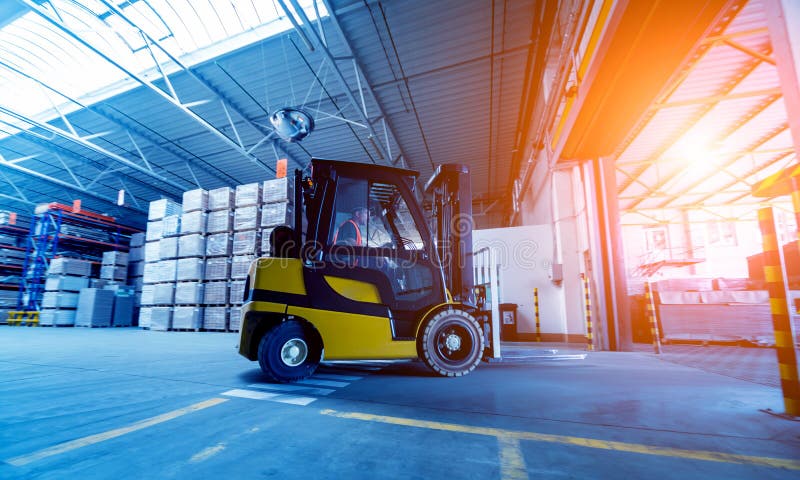A Closer Look at Forklift Safety Standards in Manufacturing
A Closer Look at Forklift Safety Standards in Manufacturing
Blog Article

In the fast-paced environment of manufacturing, forklifts play a crucial role in streamlining operations and enhancing productivity. However, with the heavy lifting and busy movement of goods, safety concerns inevitably arise. Understanding and adhering to forklift safety standards is essential not only for the wellbeing of workers but also for the overall efficiency of manufacturing processes. This is where the role of forklift manufacturers becomes pivotal, as they are tasked with designing and producing equipment that meets stringent safety regulations.
When considering a forklift manufacturer, it's important to recognize their commitment to safety and quality in their designs. Manufacturers must not only meet regulatory requirements but also anticipate the diverse needs of various industries. By integrating advanced safety features and technologies, they contribute significantly to reducing the risks commonly associated with forklift operations. A closer look at these safety standards reveals the vital importance of selecting a reputable forklift manufacturer in ensuring a safe working environment for all.
Understanding Forklift Safety Standards
Forklift safety standards are essential for ensuring the safe operation of these versatile machines in manufacturing environments. These standards are developed by various organizations, including the Occupational Safety and Health Administration (OSHA) and the American National Standards Institute (ANSI). They provide guidelines that forklift manufacturers must adhere to in order to create equipment that minimizes risks to operators and bystanders alike.
One key aspect of these safety standards is the design and construction of forklifts. Manufacturers are required to ensure that their equipment is stable, well-balanced, and equipped with necessary safety features such as seat belts, lights, and horns. These features help prevent accidents and improve visibility, which is crucial in busy manufacturing settings. Compliance with these standards helps reduce the likelihood of workplace injuries, thereby safeguarding employees.
In addition to equipment design, forklift safety standards also encompass operator training and maintenance protocols. Manufacturers often offer training programs to ensure that operators are well-versed in safe practices and understand the functionality of the forklift. Regular maintenance is similarly critical, as it ensures that forklifts remain in optimal working condition, further promoting safety on the manufacturing floor. By adhering to these comprehensive safety standards, forklift manufacturers play a vital role in enhancing workplace safety.
Key Compliance Requirements for Manufacturers
To ensure safety and efficiency in the workplace, forklift manufacturers must adhere to a variety of compliance requirements. One of the key standards is the American National Standards Institute (ANSI) compliance, which outlines the design, construction, and performance characteristics of forklifts. This involves rigorous testing to certify that forklifts can handle specified loads and perform under diverse working conditions without compromising safety.
Another critical requirement is compliance with Occupational Safety and Health Administration (OSHA) regulations. These guidelines focus on safe operation practices, operator training, and maintenance protocols. Manufacturers must also ensure that their forklifts come with proper safety features, such as load limit indicators, automatic braking systems, and operator restraints, to mitigate risks associated with forklift operations.
Additionally, manufacturers should be mindful of international standards, such as those set by the International Organization for Standardization (ISO). Adhering to ISO standards can enhance a manufacturer's credibility and marketability worldwide. This global perspective on safety and quality not only helps in designing better products but also fosters trust among customers seeking reliable and safe forklift options for their businesses.
See More
Best Practices for Ensuring Safety in Operations
Implementing thorough training programs is crucial for maintaining safety in forklift operations. It is important that all operators receive comprehensive training that covers not only the basic operation of the equipment but also safety protocols, hazard identification, and emergency response procedures. Regular refreshers should be part of the training regimen to ensure that all personnel remain updated on the latest safety standards and practices. This continuous learning environment fosters a culture of safety and accountability among workers.
Routine maintenance and inspection of forklifts play a significant role in ensuring safe operations. Forklift manufacturers provide guidelines on maintenance schedules and inspection checklists that should be strictly adhered to. Regular checks for equipment functionality, potential wear and tear, and safety features are essential to prevent malfunctions that could lead to accidents. Encouraging operators to report any issues immediately and facilitating a quick response to repairs can mitigate risks before they lead to incidents.
Creating a safety-focused work environment is essential for promoting safe forklift operations. This involves establishing clear safety procedures and protocols that are communicated effectively to all employees. Visual aids, such as signage and floor markings, can help convey important information regarding safe pathways and loading areas. Additionally, involving employees in safety discussions and encouraging them to share their insights and concerns can lead to meaningful improvements in workplace safety standards.
Report this page